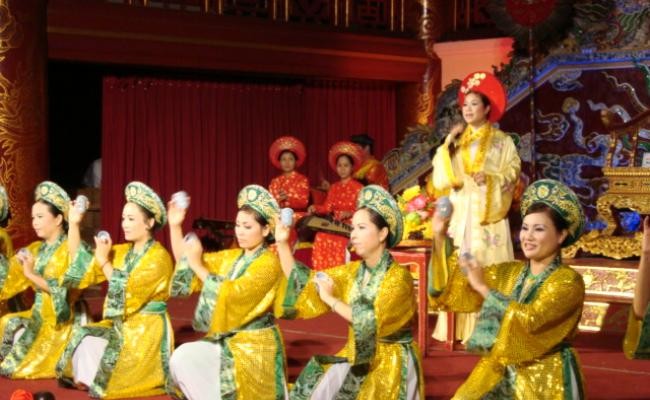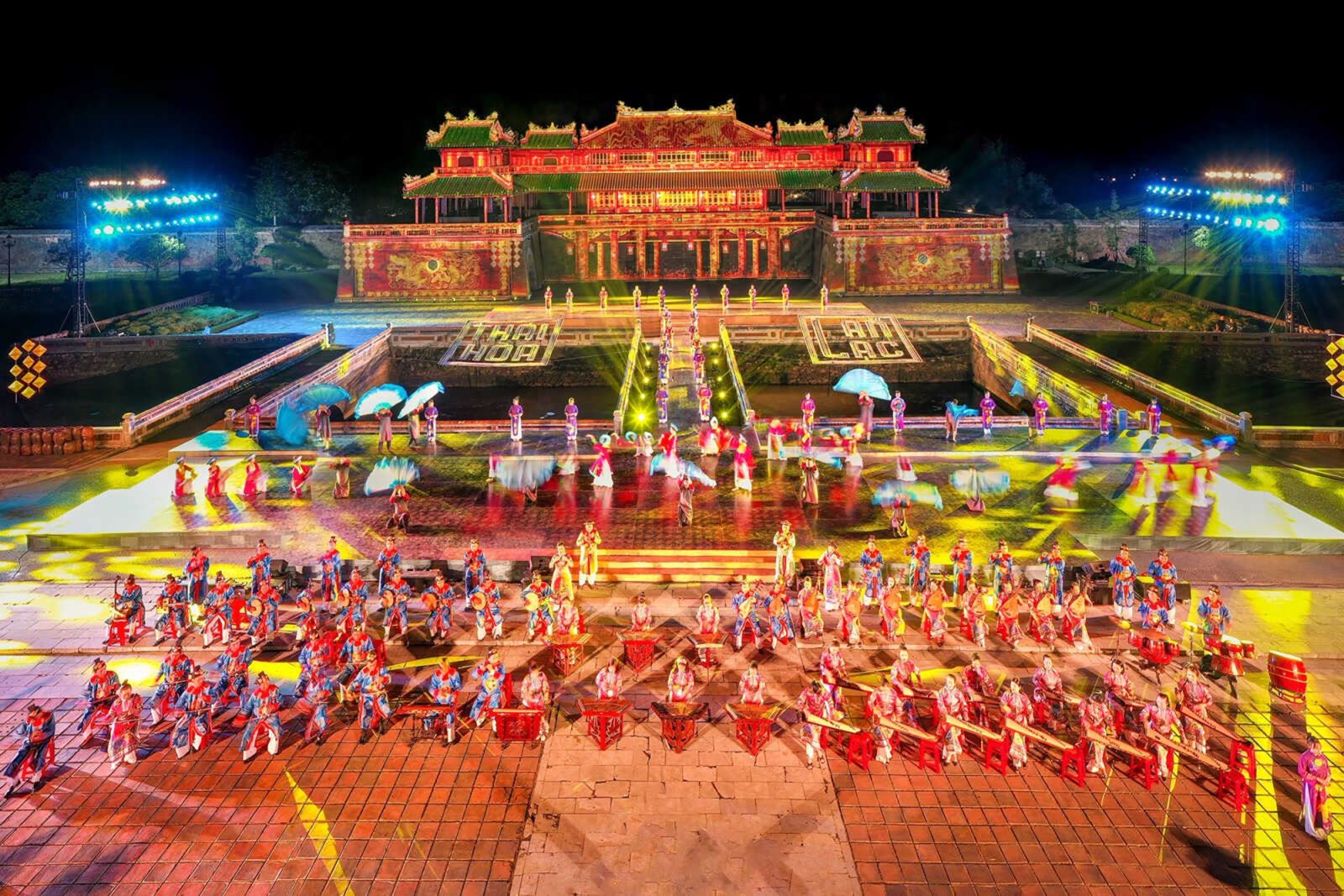Imperial court music is an integral entertainment form in the Vietnamese court during feudal times. The most outstanding form of royal music is “refined music” or “nha nhac”, which is recognized as a Masterpiece of Oral and Intangible Heritage by UNESCO. The refined music was first performed in the 13th century but until the Nguyen Dynasty could the royal music enjoy its golden age.

The success of refined music performance entails the fine cooperation of an array of instruments, ranging from string instruments such as “dan ty ba” (pear-shaped lute with four strings), “dan nguyet” (moon-shaped two string lute), “dan nhi” (two stringd vertical fiddle) to wind instruments like “ken bau” (conical oboe), “sao” (bamboo transverse flute), not mention to the appearance of some percussion instruments, drums of many kinds for example.
Apart from being an emblem of a powerful and long-lasting monarchy as appearing on special royal events such as coronations, funerals and official receptions, the royal refined music was also the symbol of culture and tradition as it was indispensible part of annual ceremonies, consisting of religious holidays and national anniversaries.
Accompanied with the royal music are many royal dances, both were performed with the theme showing respect for kings and gods and wishing the country prosperity. Additionally, the royal music partly enhances the unity and combination of Vietnamese instruments. Of different forms of traditional music in Vietnam, only the royal music could be deserving of national stature due to its sophistication and elegance.
